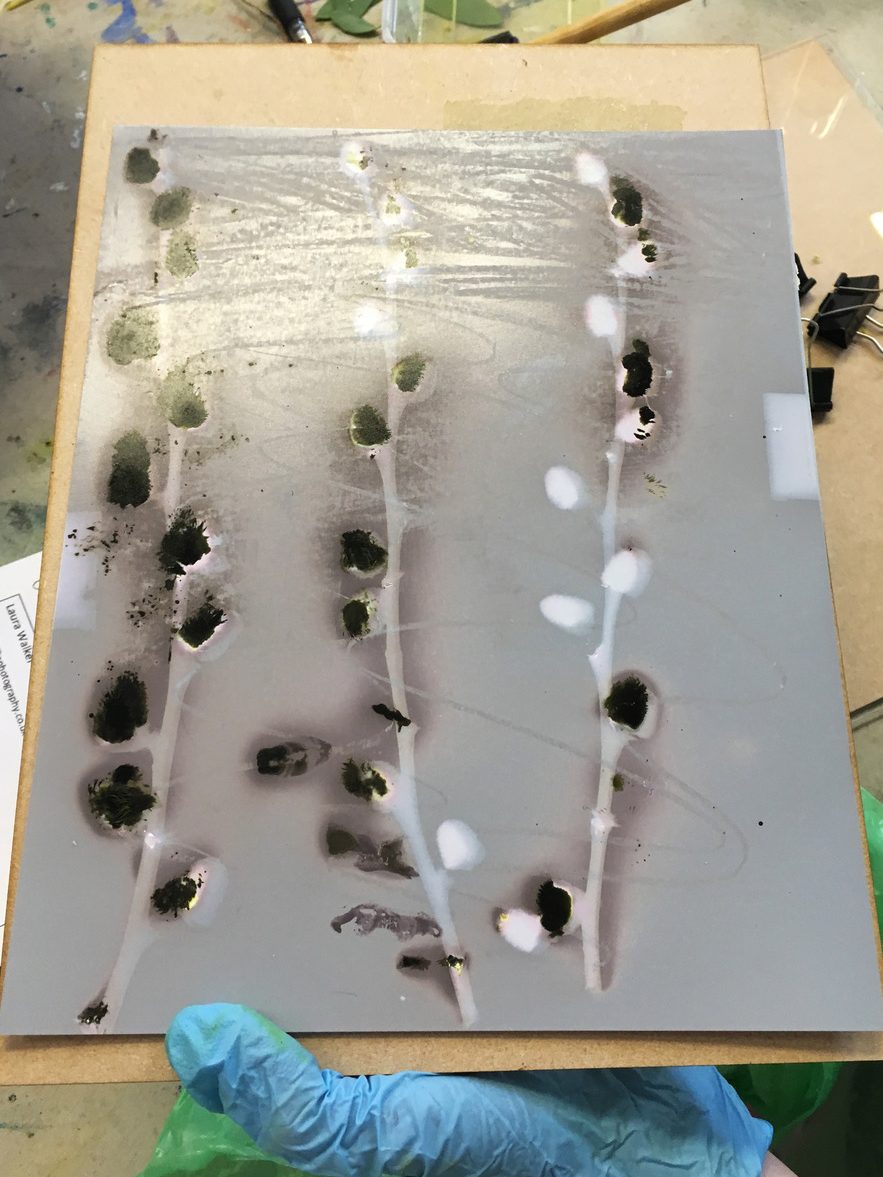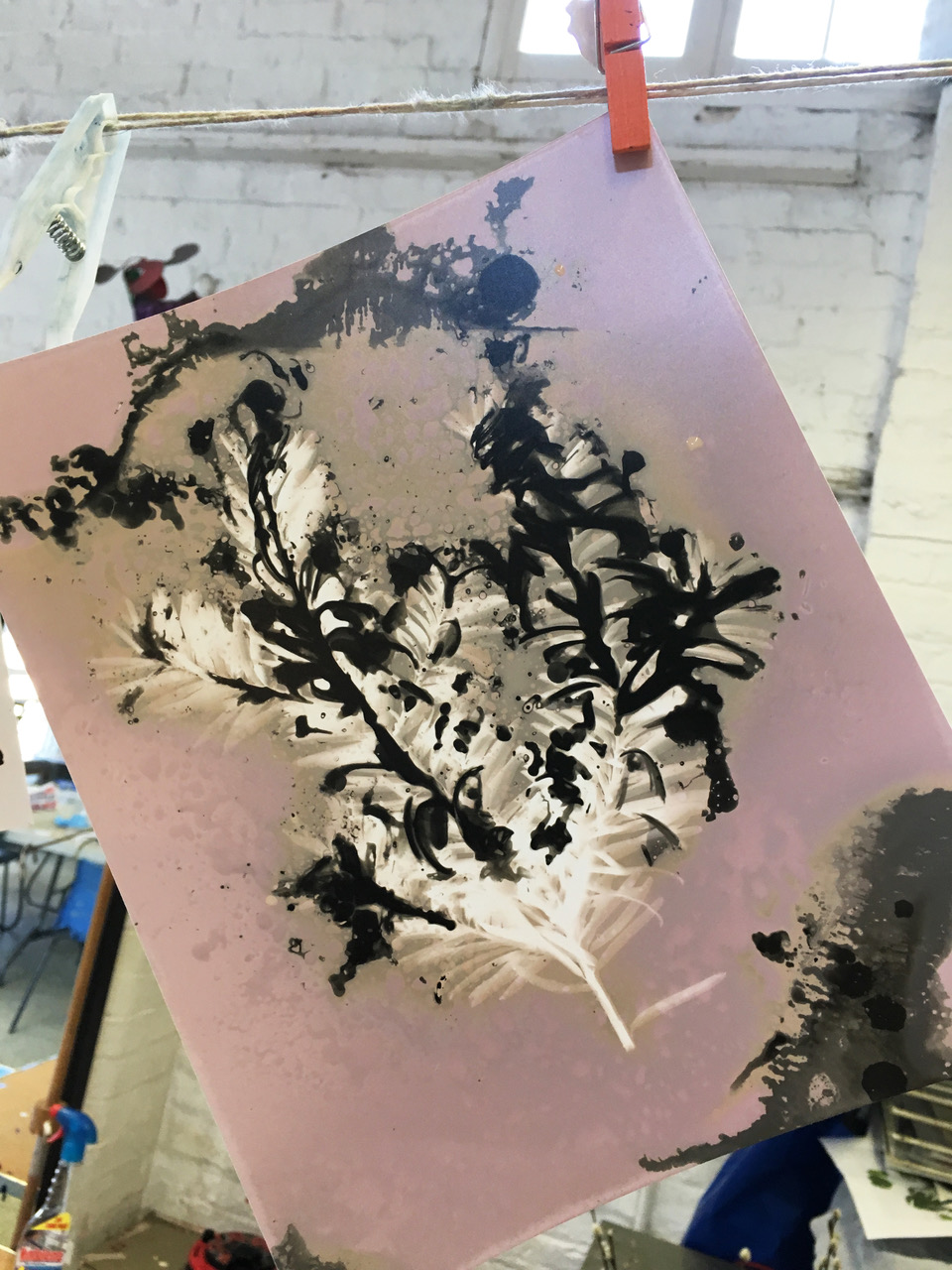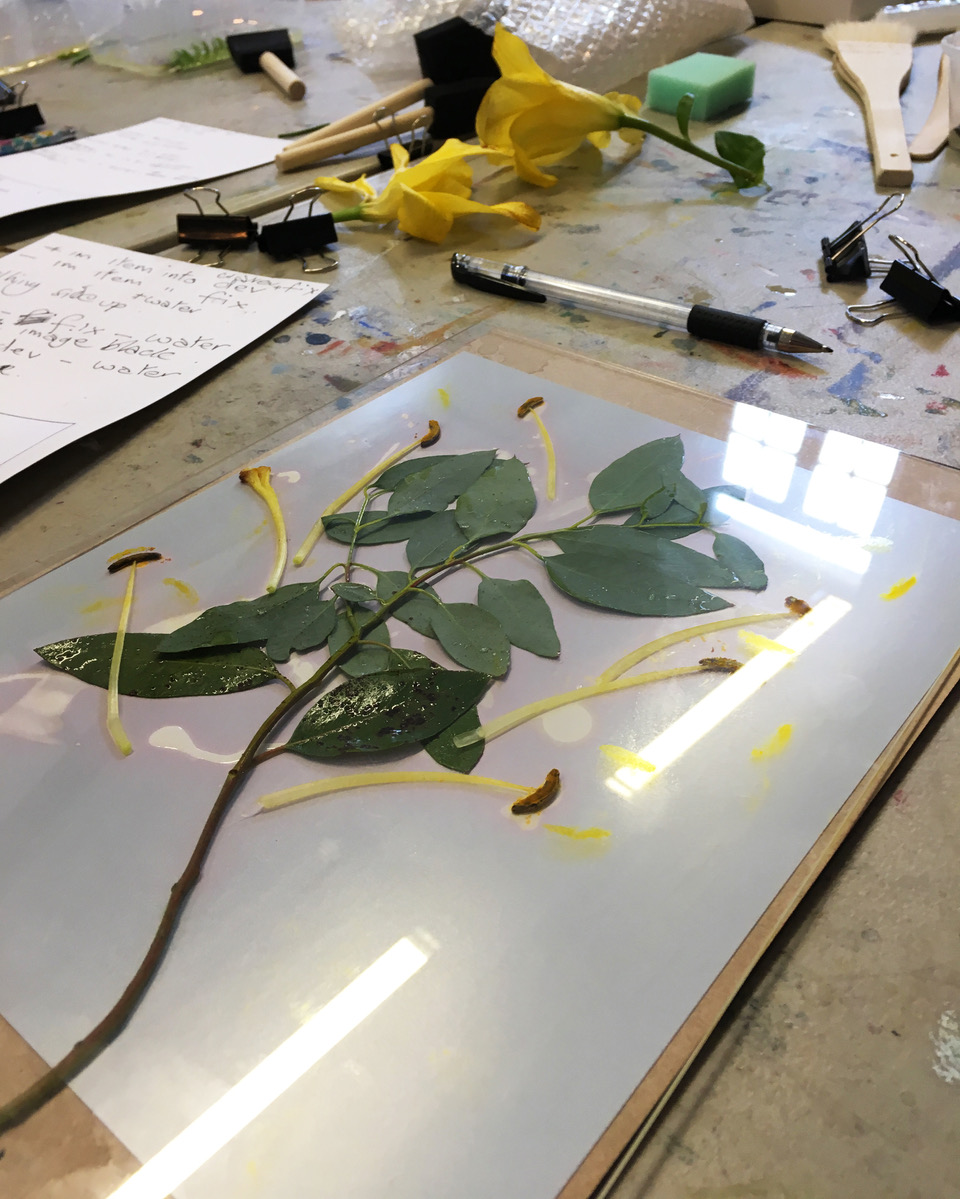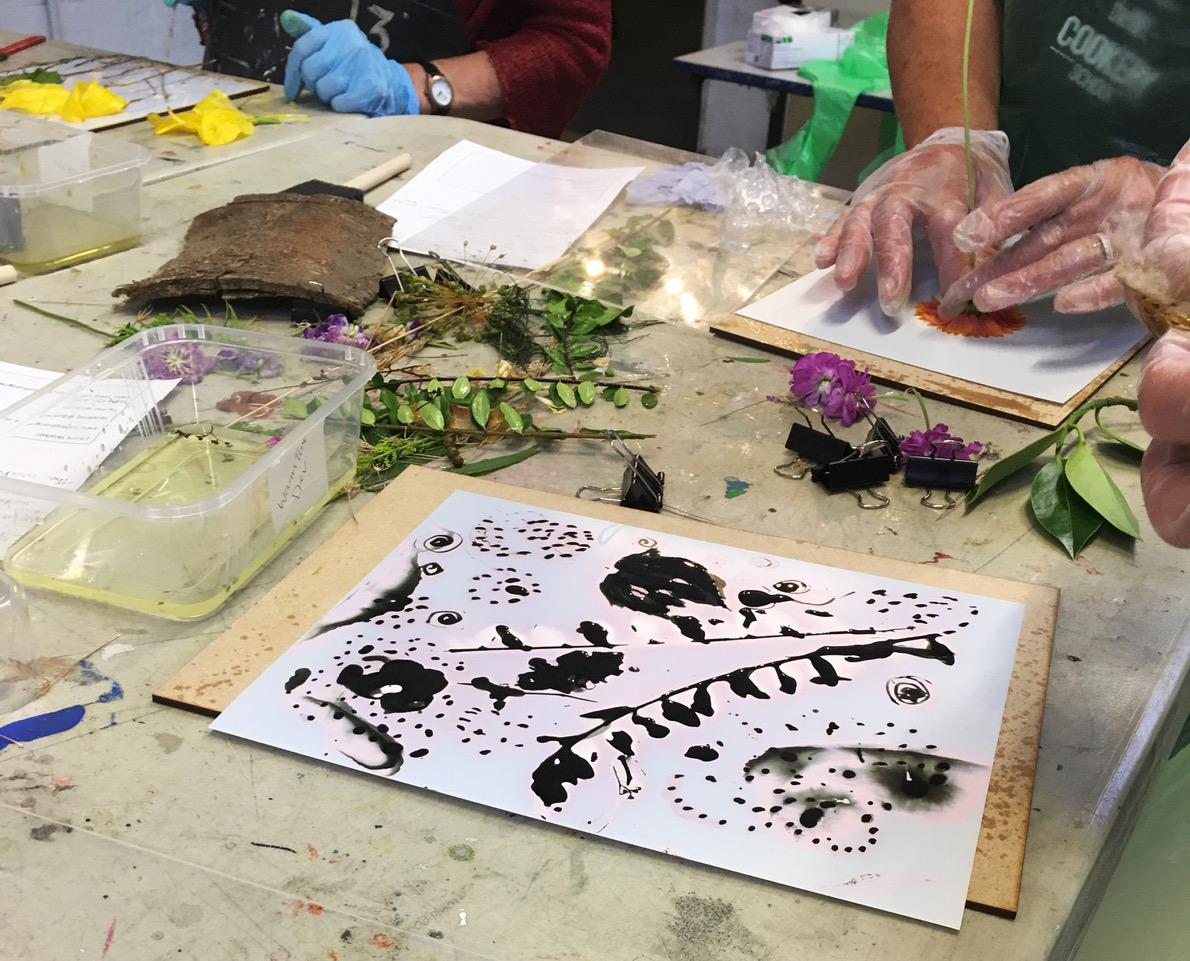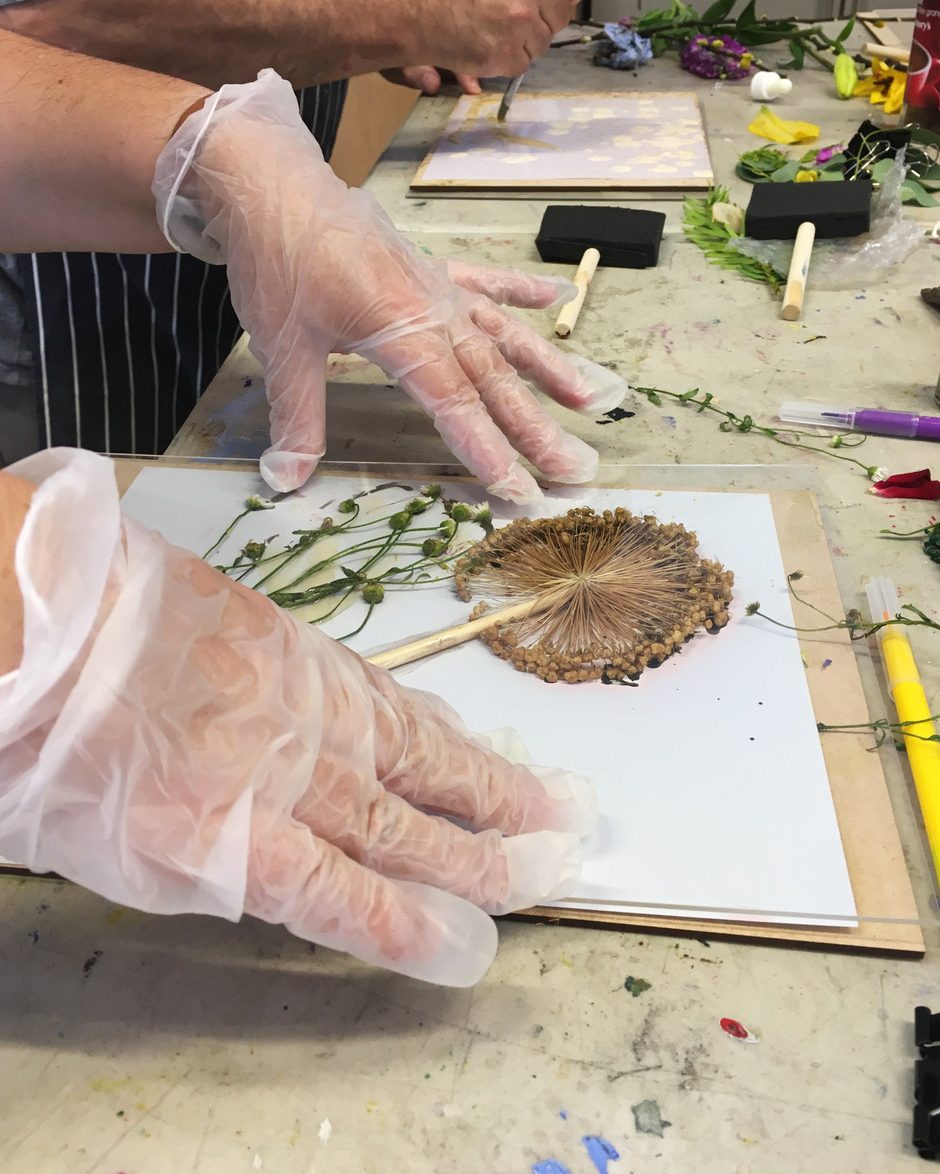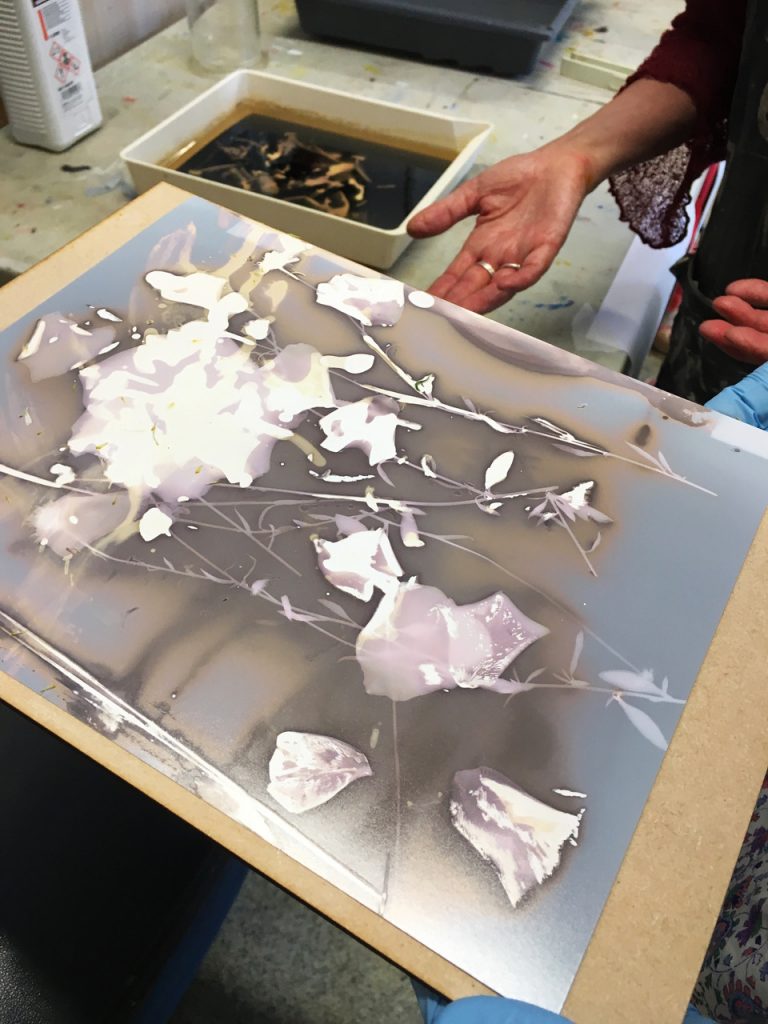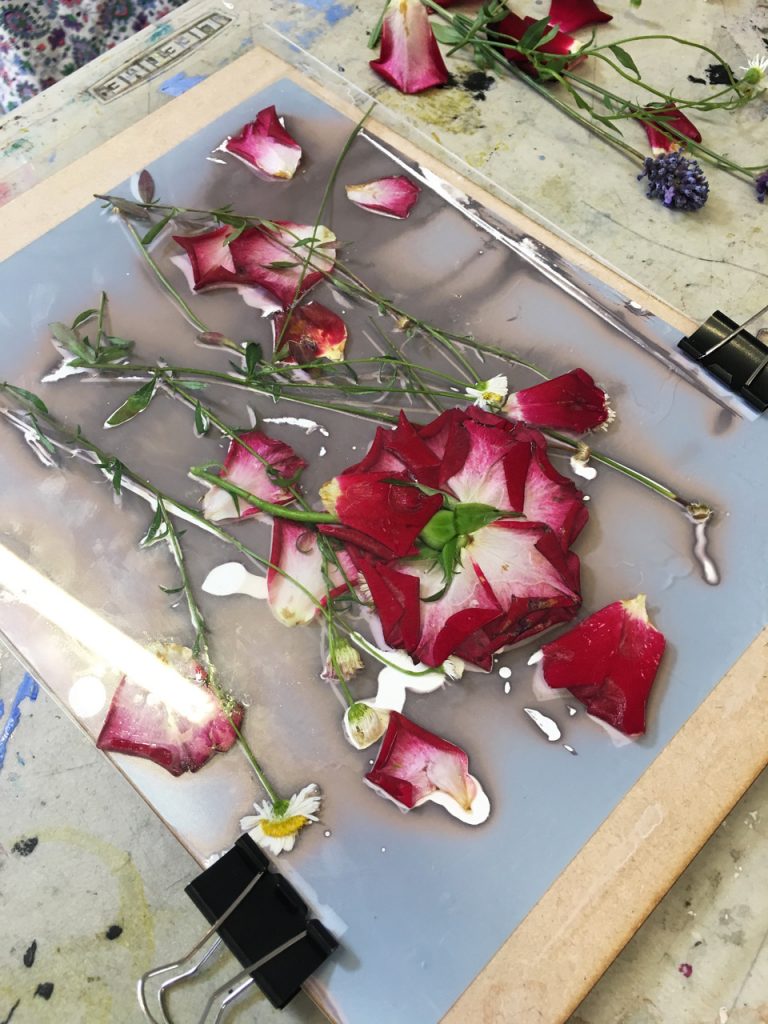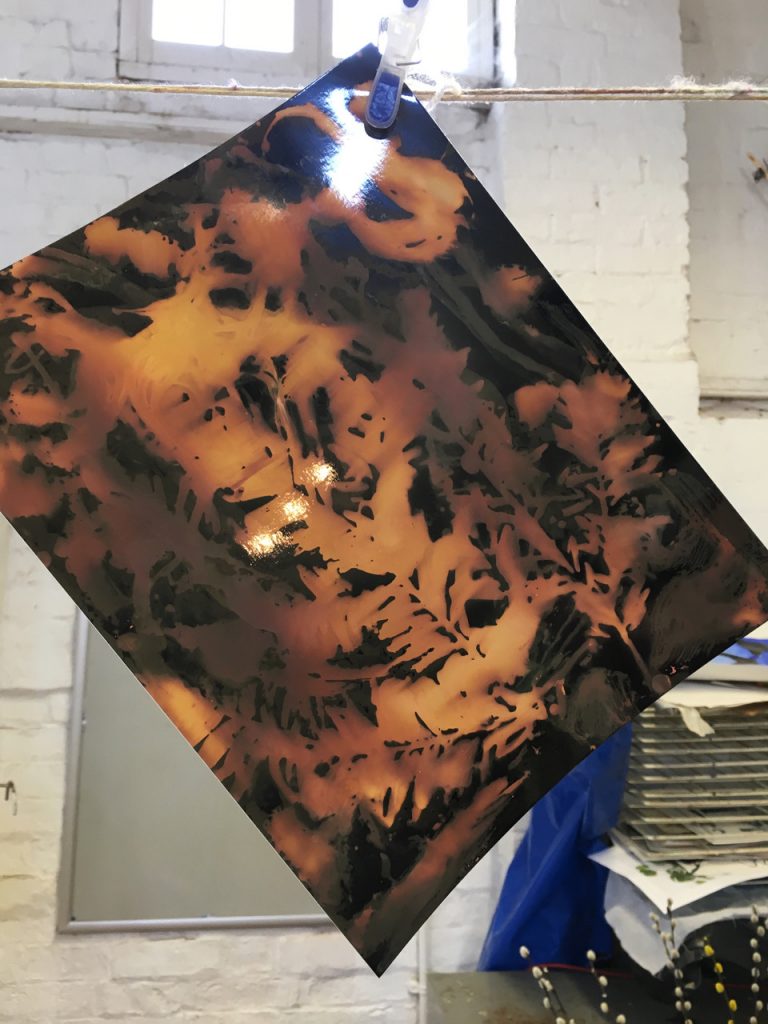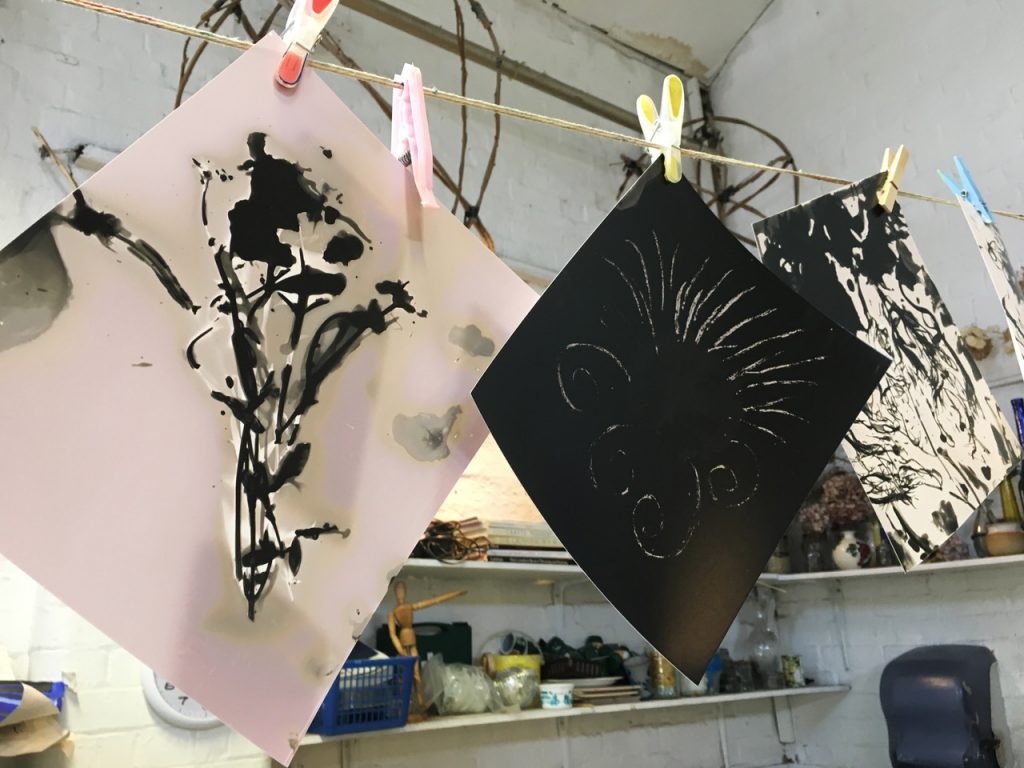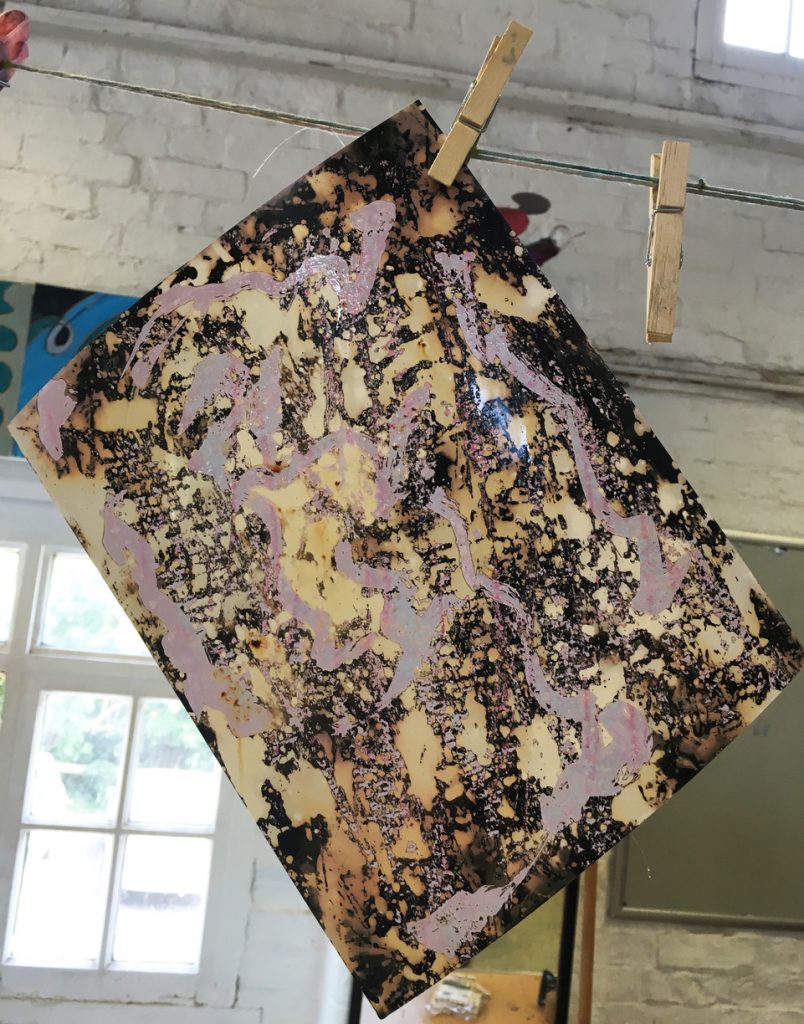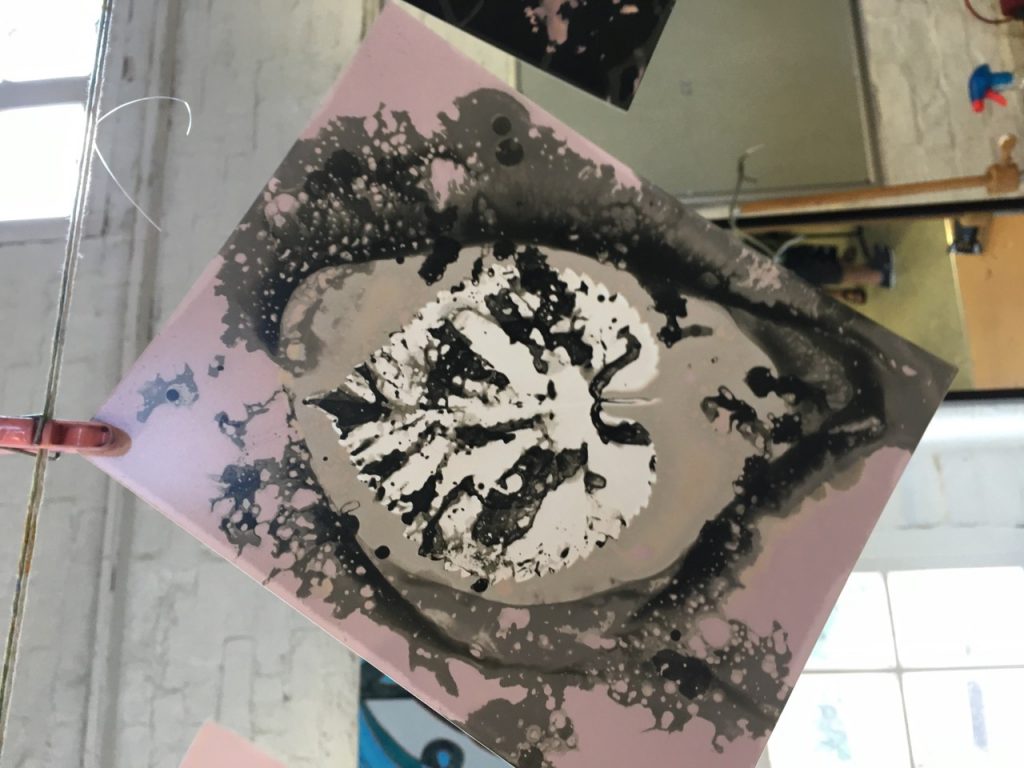Chemigrams Posted On 4th October 2018 To Magazine, Alternate & Chemistry

Chemigram workshop
On a very hot, sunny Saturday six students from The Mill Arts Centre Trust in Banbury took part in a Chemigram workshop.
Chemigrams were established in the 1950s by Belgian artist Pierre Cordier. Chemigrams are created by forcing a chemical reaction between photographic paper and photographic chemistry. In this workshop, we used ILFORD Warmtone Resin Coated Paper, ILFORD Pearl Resin Coated Paper, ILFORD Universal Developer, ILFORD Warmtone Developer and ILFORD Rapid Fixer.
Beautiful results without a darkroom
The beauty of this process is that you don’t need a darkroom to achieve stunning results.
Students started by learning how to make a positive and negative chemigram using a selection of flowers and shrubbery. We used the ILFORD Pearl Resin Coated Paper for this initial activity. Students got to choose between the Warm Tone and Universal developers, thinking about which developer would suit their image best. Students dipped their items (flowers & leaves) into either the developer or fix first. These items were then placed onto a sheet of photographic paper where students could then paint attentional chemistry onto the paper if they wanted to. Once the chemicals had started to react with the paper, the items were removed and the paper was placed into either a tray of developer or fix.
Experimenting
After students had practiced making a positive and negative chemigram they started to experiment with different resists. Resists are used to stop the development between the paper and chemistry. In this workshop students experimented with Wax, Nail Polish, Syrup, Vegetable Spray Oil, Paint and Olive Spray Oil. As the weather was good, we were also able to expose the images to the sun (lumen printing process) which added really interesting effects to both the Pearl and Warm Tone Papers.
Each student took home a selection of prints that they had made throughout the day. I hope everyone who attended this workshop enjoyed it and will carry on experimenting with the Chemigram process.
About The Author

Laura Walker - Boffin Photography
Hello everyone, my name is Laura and I am a Photographer from Oxfordshire, UK. I graduated from De Montfort University studying Video, Photography and Film Studies, I then when on to do an Artist in Residency at Banbury & Bicester College, where I focused on different Alternative Photography Processes. I also specialise in traditional black and white printing and have recently starting working with Wet Plate Collodion. I describe myself as a “heritage and rural life photographer” as I tend to be drawn to the English landscape and our traditions. I am a member of the Royal Photographic Society and support the Historical and Analogue groups.
Influences: James Ravilious, Sally Mann, Edward Burtynsky, Ansel Adams, John Gay, William Henry Fox Talbot & Frank Meadow Sutcliffe.
Awards: Bronze Award – Printed Life in Black and White – The Imaging Warehouse – 2014
Upcoming Workshops and Social
If you are interested in any of my upcoming workshops or my work please do have a look at my social media pages and website.
Facebook: @BoffPhoto
Twitter: @LBoffin
Instagram: @lauraboffin
Folksy: www.folksy.com/shops/BoffinPhotography
Etsy: www.etsy.com/uk/shop/BoffinPhotography
Website: www.boffinphotography.co.uk







